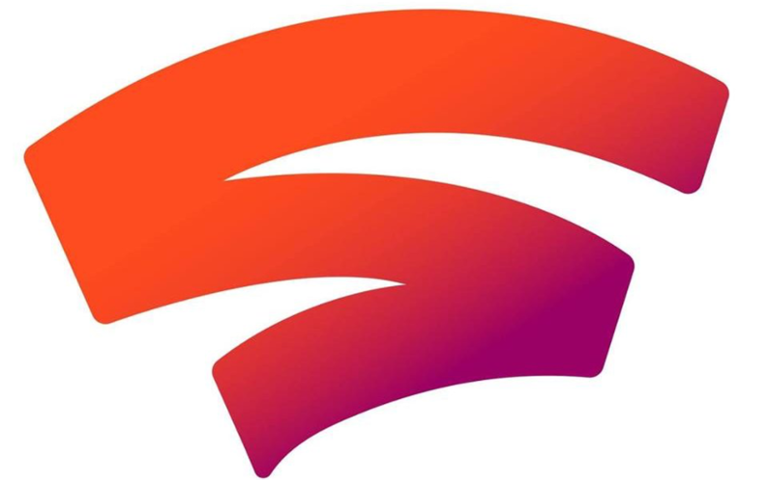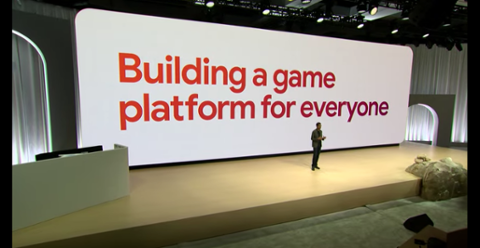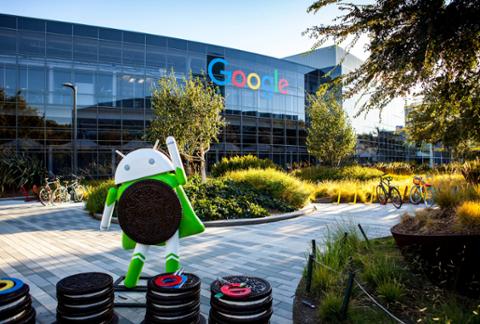Google Stadia
sounds cool. Gaming anywhere you have a data connection, streaming console-level titles from one of Google’s massive and responsive data centers, all without the need for dedicated hardware? That’s the dream, right? At the most recent Game Developers Conference (GDC),
Google unveiled Stadia to a crowd of pensive/excited developers (and breathless media). On stage, executives showed off streaming "Assassin’s Creed: Odyssey" across an Android phone, Chromecast TV, and “the least powerful PC” Google said it was able to buy (which just so happened to be a tower; seems a Chrome OS box would be the least powerful “PC” you could buy, but oh well). Google didn’t dig into many details, aside from brief specs mentions, but led the crowd to believe the game was streaming live. It looked great: No lag, incredible graphics, and no regard for on-board storage or processing power.
But in an interview with Kotaku, Stadia boss Phil Harrison said a 1080p game running at 60fps with no lag (which is essentially what "Assassin’s Creed: Odyssey" was doing) would require a connection of “approximately 25 megabits per second.” To anyone who has ever attended a tech conference (and experienced such events' notoriously janky networking), it seems unlikely that Google streamed a 1080p game at 60fps without lag unless it had some dedicated hardware in the back making sure the PC, phone, and TV had a direct link to the data center. But that’s all demo-mode stuff (and to be fair, lots of companies game their onstage presentations, so to speak). What about the nuts-and-bolts for developers? The tools seem to be there: Unreal and Unity are on-board as development platforms, as are IDEs such as Visual Studio; you can also use Havok, RenderDoc, and FaceFX. Google likewise promises some unique SDKs and APIs for Stadia, but hasn’t shared details on how gamers will be able to stream Stadia games, what the cost may be, and how this service will split revenue with developers. Harrison also thinks Google Stadia will change game development as we know it. Speaking with
GameSpot, he said:
I think it's vital that we give game developers the tools and technology to allow them to create those new experiences that are both playable and viewable. And that this is a whole new game design language, that I reckon [will be in GDCs] two, three, four years from now. [It will] be a very clear talk track inside of GDC. I'm already having these conversations with teammates in some studios. Historically, you [had] a game producer [build] the game. But now, some studios are very thoughtfully thinking about, well I need to augment that with somebody who understands the viewership experience. The language, the rules, the meta--[the meta way] of doing this hasn't been defined yet. We're just starting to define that in [this industry], but that's a really fascinating transition.
Harrison also suggested Stadia represents a pivot to games built to run from data centers rather than on consoles:
I understand that [for a gamer] the word 'exclusive' can sometimes be a challenging terminology. [I would] rather we moved the narrative towards [games] that are built specifically for a data center. And if those games also show up on other streaming platforms, that's okay, because what that means is that the developers are starting to innovate and think about the future and [build] a 21st century game, rather than a 20th century game.

Google Stadia is About the Future... of YouTube
People like watching other people play games; Google says YouTube was responsible for over 50 billion hours of game streaming viewership last year. The company also promises that, through Stadia, we will soon be able to watch a stream of a game and click a link in the YouTube video to play it in our browsers. A Stadia controller (the lone piece of consumer hardware that Google has issued for the platform so far) has a Google Assistant button, which will undoubtedly allow you to switch from frustrated game-play to YouTube tutorials on how to beat the level you’re on. As Harrison told GameSpot, YouTube viewership is as critical as game-play; he envisions share-able moments becoming YouTube video snippets, which then spur others to play the game (likely via those in-browser call-to-action buttons). He also said the Stadia GDC event was Google’s “statement of intent and vision for [game developers],” and it would spend the “coming weeks and months” with YouTube creators. This still sounds cool. If you watched a YouTube video of some AAA game, a Stadia button would let you go from viewing to playing immediately. This eliminates a lot of issues, such as finding, buying, and downloading the game, not to mention needing bespoke hardware to play it. Google Stadia wants to move the entire gaming ‘stack’ from consoles and dedicated gaming time to casual pick-up-and-play-anywhere ubiquity. But you'll need an always-on connection to the data center, so subway commuters need not apply; Harrison says downloading is off-limits. When GameSpot asked him about offline play, he said it was “not possible” via Stadia, noting it “would be a compromise of our vision if we were to do that.” This is a clever way of admitting Stadia is for gamers and game developers, but ultimately
about YouTube. We could make all sorts of assumptions about Google wanting to accelerate advertising on YouTube, and bolster it with a safe, dedicated audience (especially in the wake of
several scandals that have
rocked YouTube in the past year or so). And those might be accurate assumptions to make, but they’re a side-effect of the real issue at hand: Stadia will be a service, and a standalone business leaning very heavily into YouTube. Stadia obviously relies entirely on Google data centers, and we should expect Stadia streamers can monetize their videos with ads (you can create a unique identity so you don’t have to conflate your real self with your online gaming persona). So if you’re keeping track, Stadia tethers to four Google pillars: data centers, accounts feeding it data, YouTube, and ads, all fed by millions of hours of user-generated video.

Developers Hold the Key to ‘Room 148’
"Developers! Developers! Developers!" Remember when former Microsoft CEO Steve Ballmer went sweatily berserk and
started yelling that onstage? Hilarious, yes, but it's also an attitude that Google should adopt if it wants Stadia to work out in the long term. All its best-laid plans for Stadia mean nothing without games... and developers are in control when it comes to that. So far, Google’s developer outreach seems limited to two big games from massive studios (the latest chapters of the "Doom" and "Assassin's Creed" franchises). It also plans on spinning up its own game studio, so we expect smaller studios or indie game developers will be encouraged to publish games for Stadia via this in-house branch (somehow). Whether they
should will depend entirely on revenue, and we still don’t know what the split will be. Google is also hinting that game developers should swing for the proverbial fences when building Stadia games, because data centers have exponentially more power than consoles. But this ‘you can do anything you want with Stadia’ moonshot is now limited by bandwidth, which is arguably more restrictive than the hardware limits on consoles or handhelds such as the Nintendo Switch. I live just south of Portland, Oregon. At home, my download speeds are well over 100Mbps on a wireless connection. Without WiFi, my service dips to 7.6Mbps, not even close to good enough for Stadia, but fine for just about any mobile-first service (such as Maps).
OpenSignal data shows even the densest metro areas such as New York or Seattle have data streaming constraints that make on-the-go gaming difficult. And that's before you talk about data caps; how fast will your smartphone chew through data while you play that AAA game? That all erodes Google’s ‘do anything you want with your games because data centers have so many teraflops, bro’ mantra. There’s a clear last-mile delivery issue, and making your AAA game exclusive to Stadia seems like a fast way to lose an audience who may become fed up with buffering and stalled games (not to mention carrier fees in the event of data overages). And this leads us to the elephant in the room: Will Google give up on Stadia? After all, the company has abandoned major, "all in" initiatives in the past (Hi, Google Plus!). Harrison said "no way" to
Kotaku:
I understand the concern. But I think that all you have to do is look at the level of investment that we have made and continue to make in Stadia. This is not a trivial project by any means. This is a very, very significant cross-company effort that isn’t just my team, but it’s also across YouTube, it’s across our technical infrastructure and networking team. It represents thousands of people who are working on this business.
It’s important to remember Google CEO Larry Page
once said Google Plus would create a “social layer across all our products.” Google Plus is now weeks from deletion. And we should remember Google recently made similar over-the-top proclamations about things like Daydream, Cardboard, and Glass. None of those are dead, but they’re browning on the vine, and have failed to meet expectations initially set by Google during flashy rollout presentations. Historically, Google loves to fold when it has stiff competition, which Stadia
absolutely has (hi, Microsoft Xbox, Sony PlayStation, Nintendo, Valve, and everyone else in the gaming industry!).
Killed by Google is a website memorializing all 147 apps, services, and hardware items that the company has tossed into history's dustbin. Will Stadia become number 148? Developers are in control, because they have (and create) the games Google needs for Stadia. While we’d love to be excited about Stadia, we’ve seen 147 other times Google has made big promises and shot us in the foot... and developers are well aware of it, too.





